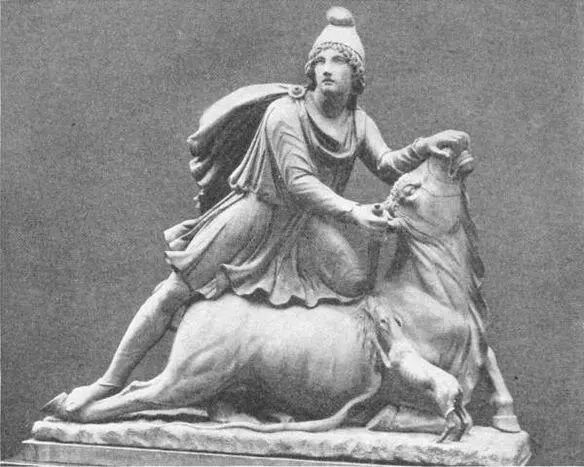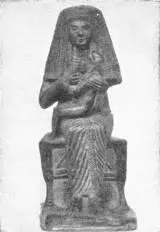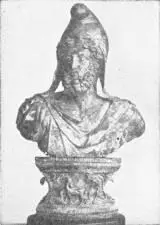Herbert Wells - A Short History of the World
Здесь есть возможность читать онлайн «Herbert Wells - A Short History of the World» весь текст электронной книги совершенно бесплатно (целиком полную версию без сокращений). В некоторых случаях можно слушать аудио, скачать через торрент в формате fb2 и присутствует краткое содержание. Год выпуска: 2011, Жанр: История, на английском языке. Описание произведения, (предисловие) а так же отзывы посетителей доступны на портале библиотеки ЛибКат.
- Название:A Short History of the World
- Автор:
- Жанр:
- Год:2011
- ISBN:нет данных
- Рейтинг книги:4 / 5. Голосов: 1
-
Избранное:Добавить в избранное
- Отзывы:
-
Ваша оценка:
- 80
- 1
- 2
- 3
- 4
- 5
A Short History of the World: краткое содержание, описание и аннотация
Предлагаем к чтению аннотацию, описание, краткое содержание или предисловие (зависит от того, что написал сам автор книги «A Short History of the World»). Если вы не нашли необходимую информацию о книге — напишите в комментариях, мы постараемся отыскать её.
A Short History of the World — читать онлайн бесплатно полную книгу (весь текст) целиком
Ниже представлен текст книги, разбитый по страницам. Система сохранения места последней прочитанной страницы, позволяет с удобством читать онлайн бесплатно книгу «A Short History of the World», без необходимости каждый раз заново искать на чём Вы остановились. Поставьте закладку, и сможете в любой момент перейти на страницу, на которой закончили чтение.
Интервал:
Закладка:
So long as conquests went on between people of similar social and religious habits it was possible to get over the clash between the god of this temple and region and the god of that by a process of grouping or assimilation. If the two gods were alike in character they were identified. It was really the same god under another name, said the priests and the people. This fusion of gods is called theocrasia; and the age of the great conquests of the thousand years B.C. was an age of theocrasia. Over wide areas the local gods were displaced by, or rather they were swallowed up in, a general god. So that when at last Hebrew prophets in Babylon proclaimed one God of Righteousness in all the earth men’s minds were fully prepared for that idea.
But often the gods were too dissimilar for such an assimilation, and then they were grouped together in some plausible relationship. A female god - and the Ægean world before the coming of the Greek was much addicted to Mother Gods—would be married to a male god, and an animal god or a star god would be humanized and the animal or astronomical aspect, the serpent or the sun or the star, made into an ornament or a symbol. Or the god of a defeated people would become a malignant antagonist to the brighter gods. The history of theology is full of such adaptations, compromises and rationalizations of once local gods.
As Egypt developed from city states into one united kingdom there was much of this theocrasia. The chief god so to speak was Osiris, a sacrificial harvest god of whom Pharaoh was supposed to be the earthly incarnation. Osiris was represented as repeatedly dying and rising again; he was not only the seed and the harvest but also by a natural extension of thought the means of human immortality. Among his symbols was the wide-winged scarabeus beetle which buries its eggs to rise again, and also the effulgent sun which sets to rise. Later on he was to be identified with Apis, the sacred bull. Associated with him was the goddess Isis. Isis was also Hathor, a cow-goddess, and the crescent moon and the Star of the sea. Osiris dies and she bears a child, Horus, who is also a hawk-god and the dawn, and who grows to become Osiris again. The effigies of Isis represent her as bearing the infant Horus in her arms and standing on the crescent moon. These are not logical relationships, but they were devised by the human mind before the development of hard and systematic thinking and they have a dream-like coherence. Beneath this triple group there are other and darker Egyptian gods, bad gods, the dog-headed Anubis, black night and the like, devourers, tempters, enemies of god and man.

MITHRAS SACRIFICING A BULL, ROMAN
(In the British Museum)
Every religious system does in the course of time fit itself to the shape of the human soul, and there can be no doubt that out of these illogical and even uncouth symbols, Egyptian people were able to fashion for themselves ways of genuine devotion and consolation. The desire for immortality was very strong in the Egyptian mind, and the religious life of Egypt turned on that desire. The Egyptian religion was an immortality religion as no other religion had ever been. As Egypt went down under foreign conquerors and the Egyptian gods ceased to have any satisfactory political significance, this craving for a life of compensations here-after, intensified.

ISIS AND HORUS
After the Greek conquest, the new city of Alexandria became the centre of Egyptian religious life, and indeed of the religious life of the whole Hellenic world. A great temple, the Serapeum, was set up by Ptolemy I at which a sort of trinity of gods was worshipped. These were Serapis (who was Osiris-Apis rechristened), Isis and Horus. These were not regarded as separate gods but as three aspects of one god, and Serapis was identified with the Greek Zeus, the Roman Jupiter and the Persian sun-god. This worship spread wherever the Hellenic influence extended, even into North India and Western China. The idea of immortality, an immortality of compensations and consolation, was eagerly received by a world in which the common life was hopelessly wretched. Serapis was called “the saviour of souls.” “After death,” said the hymns of that time, “we are still in the care of his providence.” Isis attracted many devotees. Her images stood in her temples, as Queen of Heaven, bearing the infant Horus in her arms. Candles were burnt before her, votive offerings were made to her, shaven priests consecrated to celibacy waited on her altar.
The rise of the Roman empire opened the western European world to this growing cult. The temples of Serapis-Isis, the chanting of the priests and the hope of immortal life, followed the Roman standards to Scotland and Holland. But there were many rivals to the Serapis-Isis religion. Prominent among these was Mithraism. This was a religion of Persian origin, and it centred upon some now forgotten mysteries about Mithras sacrificing a sacred and benevolent bull. Here we seem to have something more primordial than the complicated and sophisticated Serapis-Isis beliefs. We are carried back directly to the blood sacrifices of the heliolithic stage in human culture. The bull upon the Mithraic monuments always bleeds copiously from a wound in its side, and from this blood springs new life. The votary to Mithraism actually bathed in the blood of the sacrificial bull. At his initiation he went beneath a scaffolding upon which a bull was killed so that the blood could actually run down on him.
Both these religions, and the same is true of many other of the numerous parallel cults that sought the allegiance of the slaves and citizens under the earlier Roman emperors, are personal religions. They aim at personal salvation and personal immortality. The older religions were not personal like that; they were social. The older fashion of divinity was god or goddess of the city first or of the state, and only secondarily of the individual. The sacrifices were a public and not a private function. They concerned collective practical needs in this world in which we live. But the Greeks first and now the Romans had pushed religion out of politics. Guided by the Egyptian tradition religion had retreated to the other world.

BUST OF THE EMPEROR COMMODUS, A.D. 180-192
Represented as the God Mithras, Roman, Circa A.D. 190
(In the British Museum)
These new private immortality religions took all the heart and emotion out of the old state religions, but they did not actually replace them. A typical city under the earlier Roman emperors would have a number of temples to all sorts of gods. There might be a temple to Jupiter of the Capitol, the great god of Rome, and there would probably be one to the reigning Cæsar. For the Cæsars had learnt from the Pharaohs the possibility of being gods. In such temples a cold and stately political worship went on; one would go and make an offering and burn a pinch of incense to show one’s loyalty. But it would be to the temple of Isis, the dear Queen of Heaven, one would go with the burthen of one’s private troubles for advice and relief. There might be local and eccentric gods. Seville, for example, long affected the worship of the old Carthaginian Venus. In a cave or an underground temple there would certainly be an altar to Mithras, attended by legionaries and slaves. And probably also there would be a synagogue where the Jews gathered to read their Bible and uphold their faith in the unseen God of all the Earth.
Читать дальшеИнтервал:
Закладка:
Похожие книги на «A Short History of the World»
Представляем Вашему вниманию похожие книги на «A Short History of the World» списком для выбора. Мы отобрали схожую по названию и смыслу литературу в надежде предоставить читателям больше вариантов отыскать новые, интересные, ещё непрочитанные произведения.
Обсуждение, отзывы о книге «A Short History of the World» и просто собственные мнения читателей. Оставьте ваши комментарии, напишите, что Вы думаете о произведении, его смысле или главных героях. Укажите что конкретно понравилось, а что нет, и почему Вы так считаете.








